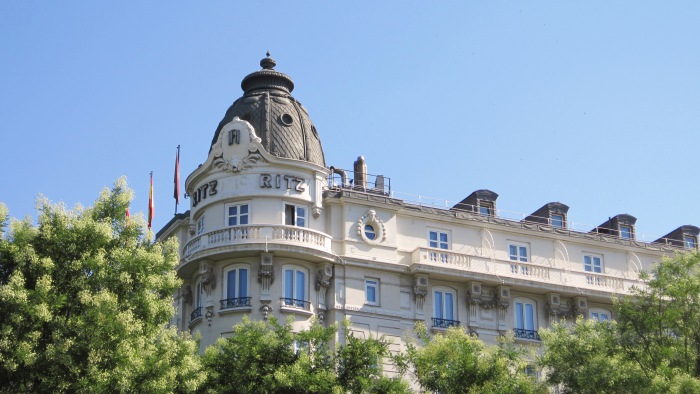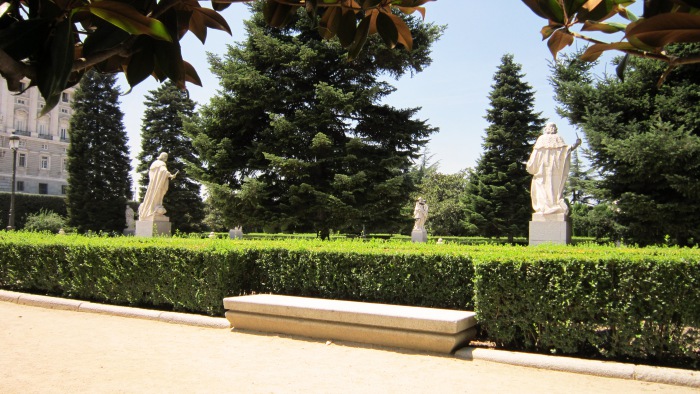Budget
Prices in Spain are quite high by international standards, however, they can vary greatly by region. Northern cities are generally more expensive than Madrid, southern cities, on the other hand, tend to be cheaper than the capital. To save some money try to visit museums on their free days, eat tapas, share accommodation, and travel underground.

• Prices for private rooms start at 20 USD (16 EUR) in Valencia, 30 USD (24 EUR) in Madrid and Tenerife, 35 USD (28 EUR) in Barcelona, and 45 USD (36 EUR) in Ibiza.
• Food prices are fairly expensive. Prices for a budget dinner start at around 12.5 USD (10 EUR). Street food and fast food restaurants are generally cheaper.
• Transportation costs are reasonable. Public transportation fares within the cities start at around 1.9 USD (1.5 EUR). Metro is the cheapest means of transportation within the cities. Prices for a 7.5-hour bus ride from Barcelona to Madrid start at 15 USD (12,25 EUR). Bus rides are usually a lot cheaper than trains.
To save some more money, check out our Budget cutting tips.
Where to stay
You can find great accommodation options on Booking. Make sure to search for private rooms popular for romance. 

Best time to go
The peak season in Spain is during the summer. The weather is nice, sometimes it can get too hot and the main tourist destinations tend to get overrun with tourists. August is Spain’s own holiday month – inland cities get empty, while coastal areas are at their most crowded. Late spring and early fall may be the best times to visit Spain – the temperatures and prices are moderate and the most popular tourist destinations aren’t yet overcrowded.
Other information
♦ Planning and preparation: check out our planning routine here.
♦ Packing: check out the honeymoon adventurers’ ultimate packing list here.
♦ For other travel tips check out Travel like a pro, Travel for couples, Honeymoon styles, Honeymoon activities, Responsible tourism, and Travel resources.
♦ Language: The official language in Spain is Spanish. Check out the typical travel vocabulary (in English) here. Learn useful travel phrases in Spanish here.
♦ Currency: Euro (EUR)

♦ Visa or other entry requirements: All visitors to Spain are required to have a valid travel document. Visa requirements depend on the traveler’s nationality. For more information check out their official website.
♦ Electricity standards: The power plug types in Spain are C and F, the standard voltage is 230 V and the standard frequency is 50 Hz.
♦ Time zones: UTC+01:00 (Standard Time Zone),
UTC+02:00 (Daylight Saving Time – during the summer, from March to October)
Canary Islands: UTC+00:00 (Standard Time Zone),
UTC+01:00 (Daylight Saving Time – during the summer, from March to October)

♦ Immunization recommendations and requirements: There are no vaccination requirements for visitors to Spain. However, it is recommended to get travel vaccines and medicines for tetanus, hepatitis A, hepatitis B, and rabies.
♦ Health and safety tips:
You should always make sure to follow the usual travel safety precautions:
- Leave your jewelry and other valuable belongings in the hotel safe.
- Keep your emergency cash apart from the rest of your money.
- Dress comfortably and carry only the items you will need for the day.
- Don’t carry a lot of money.
- Always make sure to lock your room before leaving the hotel.
- Be aware of your surroundings at all times.
- Stay in well-lit areas.
- Try to maintain a low profile and do your best to fit in.
- Carry a travel wallet/money belt/money pouch for carrying money and documents safely.
- Avoid contact with potential scam artists.
- Avoid showing off valuable belongings (like cameras) in public.
- Don’t count your money in public.
- Keep an eye on your belongings at all times.
For other common safety concerns in Spain, check out Lonely Planet’s safety tips. For common health concerns check out Lonely Planet’s health tips.
To stay healthy while traveling, check out our health travel tips.

• Tap water in Spain is generally safe to drink. There are some exceptions (e.g. Ibiza). When in doubt, drink boiled, filtered or bottled water instead.
* Always make sure to reuse a water bottle to cut down on waste.
♦ Local Customs: Spaniards are generally friendly, welcoming, full of energy and love of life, mostly informal, yet polite. When meeting someone in person a friendly handshake is customary; friends hug or kiss on one or both cheeks. Eye contact is expected and appreciated. There is no particular dress code required on the streets of Spain. However, appearance is extremely important to the locals. They dress elegantly and sometimes conservatively. Make sure to dress up for formal occasions and avoid wearing a bikini elsewhere than on the beach. Food plays an important part in Spanish social life. It’s common for shops to take a break for lunch and siesta. Tipping is common in Spain, but not always expected.
Check out top things to see and do in Madrid.




 Destinations:
Destinations:

 Desti
Desti

 Destination:
Destination: 




 Destination: B
Destination: B



 De
De
